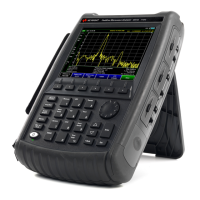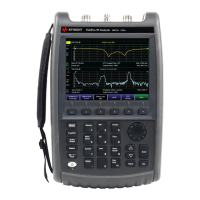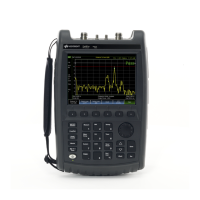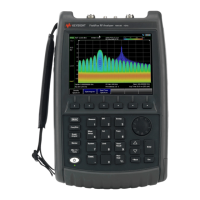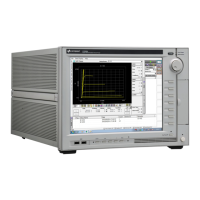Keysight N9927-90001 User’s Guide 631
System Settings
Utilities
How to view and change the Frequency Extender (Freq Extnd) Settings
The following are the only supported modes for the frequency extender feature:
SA (Option 233, mixed analyzers, RTSA (Option 350), IQA (Option 351), OTA
(Option 370/377/378), PAA (Option 360) modes, and VSA (via the Remote
Server feature).
For this section, refer to Figure 29-1 on page 634, Figure 29-2 on page 635,
and Figure 29-3 on page 635, Figure 29-4 on page 636, Figure 29-6 on
page 637, and Figure 29-6 on page 637.
These settings are used to set up a frequency extender head (e.g., OML head).
The frequency extender feature can be used in OTA FR2 measurements. See
also, Chapter 12, “Over–the–Air Measurements (OTA) – LTE FDD Option 370
and 5GTF Option 377 (CPU2 Only).”
The frequency extender heads are an external down converter that extends the
FieldFox's range. The frequency extender head makes use of the FieldFox's
source and uses USB port for power. The FieldFox support for the frequency
extender head includes:
— The frequency extender heads are compatible with to SA, IQA, OTA, PAA,
RTSA, and 89600 VSA (via the Remote Server feature—with VSA license).
— The USB ports are used to supply power to the head
— Port 1 is used to supply an LO signal to the head. The LO signal is
automatically generated, using the internal source. Therefore the
application disables normal Port 1 access to the internal source. But,
automatic alignments of the SA Receiver still remain active using an
internal path for the source.
— Port 2 is where the head delivers the downconverted signal to the SA
receiver.
— High Sensitivity ON OFF selection: able to choose between showing largest
span (wide) available (6 GHz) or best noise floor (narrow).
PAA and 89600 VSA (via the Remote Server feature) is compatible with the
frequency converter heads, but cannot apply or edit the frequency head
corrections. Refer to “Utilities” on page 638.
PAA and 89600 VSA (via the Remote Server feature) is compatible with the
frequency converter heads, but cannot apply or edit the frequency head
corrections. Refer to “Utilities” on page 638.
The OML frequency extenders have approximately 4 to 10 dB of gain
depending on the mixer and frequency.

